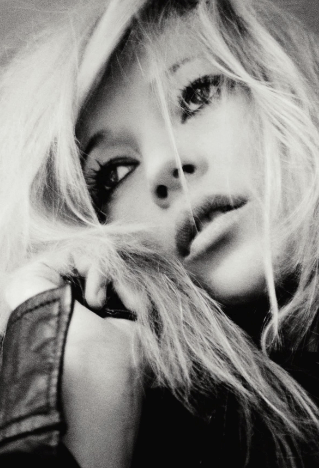Earlier in the course I studied photographer Nan Golding. Over-whelmed with understanding her and her work I wanted to look at a photographer whose work I loved! Mario Testino has always been an inspiration and I’m always in awe of his pictures to say the least!
 Mario Testino
Mario Testino
Master of Photography – World-renowned fashion and portrait photographer.
Born in Lima, Peru in October 1954, one of six children, to an upper middle class, Catholic family, his father was Italian and his mother is half Spanish and half Irish. Raised in an American school, Mario learned to speak English. When his father’s work as a property dealer took him to New York on business, Mario would go along with him, as his own personal translator. Mario’s love for fashion grew and he would return home dressed in the latest hippy trends.
He went on to study Law and International Relations in California, but never completed his studies. He moved to Lambeth, London with his best friend in 1976, unable to draw or design photography was Mario’s way into the fashion world. He made money waiting on tables and shot cheap portfolios for young wannabe models. He wasn’t technically minded and used only natural light, he would create the whole look, applying make-up and styling their hair.
In his early years as a photographer, he was greatly influenced by the work of Cecil Beaton (1904-1980), English fashion and portrait photographer, known for photographing the famous and fashionable all around the world. Determined to achieve what Beaton had, Mario worked relentlessly to achieve recognition, travelling between London and Paris, networking with other photographers. He would queue up with his camera at fashion shows relying on assistants to get him in – photographing models from the back of the room he rarely saw their shoes! Slowly he made his way forward until he managed to get close enough to see the whole look. His lucky break came when introduced to Gianni Versace by Madonna; he photographed an advertising champagne with great success. The nineties became Mario’s triumphant years, including his iconic pictures of the late Diana Princess of Wales shot for the cover of Vanity Fair in 1997, just months before her death.

He was developing his own style, and with his relaxed and unique way of connecting with people, in the way that other photographers could not, Mario was able to bring out that ‘something special’ in his subjects. Memories of his teen years spent partying on the beaches in Rio de Janeiro; still influence Mario’s style today. His pictures are alive; they’re about having a great time. He believes a fashion photo is only believable when the model wearing it, would wear it in real life.
In 2002 the National Portrait Gallery, London, invited Mario to stage an exhibition of his work – it’s their most successful exhibition in the galleries history.
With over thirty years in the business, Mario’s work has featured worldwide on the cover of many of the glossies; GQ, Vanity Fair and Vogue. He has worked on countless advertising campaigns for some of the biggest fashion houses – Calvin Klein, Hugo Boss, Valentino and D&G. Commissions include photographing Royalty, high society weddings and events and, more recently, Prince William and Kate Middleton’s engagement.
Mario had produced nine books of his work; his work has been exhibited in museums and galleries around the world. Been awarded for his outstanding achievements and charity work, among them a Doctor Emeritus from the University of Arts and was awarded an order of merit from the city of Lima, Peru.
Now at the top of his profession, Mario spends his time travelling all over the world – London, LA, New York, Paris Milan… He continues to amaze and captivate us with his chic and beautifully immoral images.


http://www.mariotestino.com/
 taken using the 105mm – A/priority – f/2.8 – 1/100 sec – ISO 200 – W/B tungsten – focal length 70mm.
taken using the 105mm – A/priority – f/2.8 – 1/100 sec – ISO 200 – W/B tungsten – focal length 70mm. Lens 200mm – A/priority – f/4.2 – 1/80 sec – ISO 200 – W/B tungsten – focal length 200mm.
Lens 200mm – A/priority – f/4.2 – 1/80 sec – ISO 200 – W/B tungsten – focal length 200mm. f/4.2 – 1/125 sec – ISO 200 – W/B tungsten – focal length 200mm.
f/4.2 – 1/125 sec – ISO 200 – W/B tungsten – focal length 200mm.




























